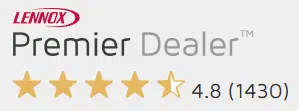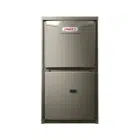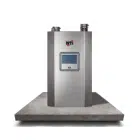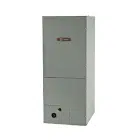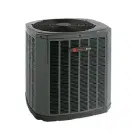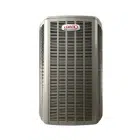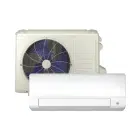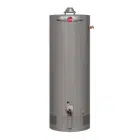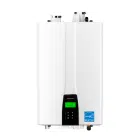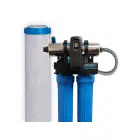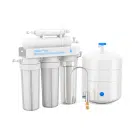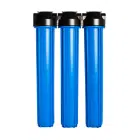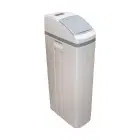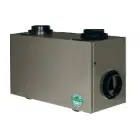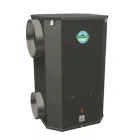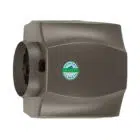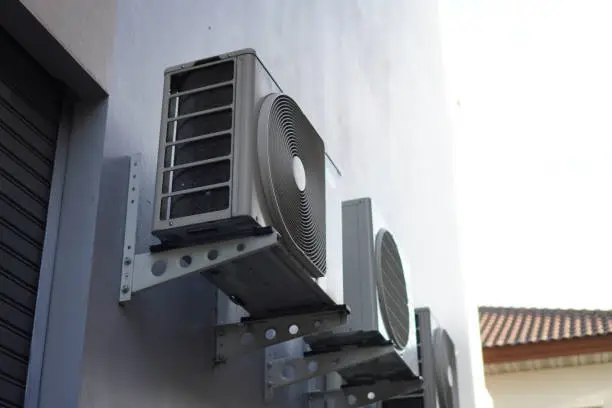
Table of Contents
As environmental regulations tighten globally, the HVAC industry is undergoing significant changes. One of the most notable shifts is the phasing out of the widely used Puron R410a refrigerant. For HVAC professionals and homeowners alike, understanding these changes is crucial. This guide provides essential updates on the phase-out of R410a, reasons behind this transition, and what it means for you and your HVAC systems.
What is R410a Refrigerant?
R410a, commonly known as Puron, is a hydrofluorocarbon (HFC) refrigerant used in residential and commercial air conditioning and heat pump systems. Introduced as a replacement for R22 refrigerant, R410a became popular due to its superior efficiency and lower ozone depletion potential (ODP).
R410a is non-ozone depleting, unlike its predecessor R22, meaning it does not contribute to ozone layer depletion. Systems using R410a operate at higher pressures, which can translate to better energy efficiency and cooling capacity. Its widespread adoption in new HVAC systems has led to broad availability and support. The history of R410a’s use began in the early 2000s as environmental regulations, such as the Montreal Protocol, mandated the phase-out of ozone-depleting substances like R22. Its adoption helped HVAC manufacturers meet these regulations while improving system performance and reliability.
Reasons for Phasing Out R410a
Despite its benefits, R410a is being phased out due to its high global warming potential (GWP). GWP measures how much heat a greenhouse gas traps in the atmosphere over a specific period, compared to carbon dioxide.
R410a has a GWP of 2,088, meaning it is over 2,000 times more effective at trapping heat than CO2. This significant impact on global warming has prompted regulatory actions. Reducing the use of high-GWP refrigerants is part of global efforts to combat climate change, aligned with agreements like the Kigali Amendment to the Montreal Protocol.
Countries worldwide are adopting stricter regulations on refrigerants with high GWP. The Kigali Amendment, effective from 2019, mandates a gradual reduction in the production and consumption of HFCs, including R410a. Canada, committed to these global agreements, has set timelines for reducing HFC use, aiming for an 85% reduction by 2036. These regulations influence the availability and legality of using R410a in new HVAC systems.
Updates and Phase-Out Timeline

The phase-out of R410a is being implemented in stages, affecting both manufacturers and consumers.
Key Dates and Stages:
- 2023-2025: Gradual reduction in the production and import of R410a, encouraging manufacturers to shift to alternative refrigerants.
- 2025: Ban on the use of R410a in new residential and light commercial air conditioning and heat pump systems.
- 2030-2036: Complete phase-out of R410a in all new equipment, with existing systems still allowed to operate and be serviced.
Impact on the HVAC Market:
- Manufacturers: Companies are investing in the development and production of HVAC systems compatible with low-GWP refrigerants. This transition requires retooling manufacturing processes and ensuring compatibility with new refrigerants.
- Consumers: Homeowners and businesses will see a shift in the types of HVAC systems available. Systems using R-410a refrigerant will become less common, and servicing these systems may become more expensive as supplies dwindle.
Your AC system relies on a series of sensors and a control board to regulate its operations. Problems in these areas can prevent your AC from turning on.
Faulty Sensors: Your AC system relies on sensors to monitor and regulate its functions. If a sensor is malfunctioning, it can prevent the system from turning on. Sensor issues can be tricky to diagnose as they often require specialized equipment. Signs of sensor problems include irregular temperature readings or the system cycling on and off erratically.
- Temperature Sensors: Monitor temperature accurately to control cooling.
- Signs of Failure: Irregular readings, erratic system behavior.
- Diagnosis: Often requires professional tools and expertise.
Control Board Failure: The control board is essentially the brain of your AC system, managing all its functions. If it fails, the system won’t operate correctly. Indicators of a control board issue include erratic behavior, the unit not responding to commands, or no power reaching the system components. Diagnosing a control board problem typically requires a professional technician.
- Role of the Control Board: Manages all electrical functions of the AC.
- Symptoms of Failure: No response from the unit, erratic operation. Professional Diagnosis: Requires a trained technician to identify and fix.
For professional air conditioning repair for any of these issues, please contact us at HVAC Service Solutions using the link below https://thehvacservice.ca/repair-air-conditioners/
Alternatives to R-410a refrigerant
Several refrigerants are emerging as viable alternatives to R410a, each with its characteristics and benefits. R32 is one such alternative, with a GWP of 675, significantly lower than R410a. It offers similar or improved energy efficiency compared to R410a and is already in use in many new residential air conditioning systems globally.
Another alternative is R454B, which has a GWP of 466, making it one of the lowest-GWP options available. It provides efficient cooling with minor modifications to existing R410a systems. However, R454B is classified as mildly flammable (A2L), requiring specific safety considerations during installation and maintenance.
Other alternatives include R466A, a non-flammable option with a GWP of around 733, suitable for specific applications where safety is a primary concern. Additionally, natural refrigerants like CO2 (R744) and propane (R290) are gaining attention for their very low GWP, though they come with other technical and safety challenges.
Recommendations for Clients
For homeowners and businesses currently using systems with R410a, planning and proactive measures are crucial.
For Existing Systems:
Regular AC Maintenance: Ensure your current R-410a refrigerant are well-maintained to maximize their lifespan and efficiency.
Leak Checks: Regularly inspect systems for leaks, as escaping refrigerant contributes to environmental harm and system inefficiency.
Professional Service: Use certified HVAC technicians familiar with R410a and its alternatives to handle maintenance and repairs.
Preparing for Transition:
Evaluate System Age: Consider the age and condition of your existing HVAC system. Older systems may be more cost-effective to replace than retrofit.
Plan for Replacement: If your system is nearing the end of its life, plan for replacement with a new system using low-GWP refrigerants.
Energy Efficiency: Look for new systems with high energy efficiency ratings, which can offset initial costs through lower operating expenses.
Consulting with Professionals:
Get Expert Advice: Contact HVAC professionals to discuss the best options for your specific needs and budget.
Future-proofing: Invest in systems that not only meet current regulations but are also likely to remain compliant with future standards.
Service Contracts: Consider service contracts with your HVAC provider to ensure ongoing maintenance and support during the transition period.
Scheduling professional AC maintenance can prevent major issues and improve system performance. Regular inspections and tune-ups can catch small problems before they become major repairs.
Seasonal Tune-Ups: Schedule a professional inspection and tune-up before the start of each cooling season. This includes checking refrigerant levels, cleaning components, and ensuring the system is operating efficiently.
Service Agreements: Signing up for a maintenance plan with HVAC Service Solutions offers numerous benefits. You’ll receive regular inspections, priority service, and discounts on repairs. This proactive approach helps prevent unexpected breakdowns and keeps your system in top condition.
Conclusion
The phase-out of R410a refrigerant represents a significant shift in the HVAC industry, driven by the need to reduce environmental impact and comply with international and national regulations. Understanding these changes, the reasons behind them, and the available alternatives is essential for homeowners and businesses alike.
As R-410a refrigerant becomes less available, transitioning to low-GWP refrigerants will be critical. By staying informed and proactive, you can ensure your HVAC systems remain efficient, environmentally friendly, and compliant with evolving standards. For personalized advice and support, reach out to HVAC Service Solutions to help navigate these changes and find the best solutions for your needs.
Frequent Asked Questions
Why is R410a being phased out?
R410a is being phased out primarily due to its high global warming potential (GWP). Despite being non-ozone depleting, R410a contributes significantly to global warming, which has prompted regulatory actions worldwide. The r410a phase out is part of a broader effort to reduce the environmental impact of HVAC systems and comply with international agreements like the Kigali Amendment to the Montreal Protocol. This amendment aims to cut down the production and consumption of HFCs, including R410a, to mitigate climate change. In response, countries, including Canada, have set timelines to reduce and eventually eliminate the use of high-GWP refrigerants. The transition away from R410a will help lower greenhouse gas emissions, contributing to global climate change mitigation efforts. This phase-out is a crucial step in the global strategy to combat environmental issues associated with high-GWP substances.
When will R410a be completely phased out?
The r410a phase out is being implemented in stages. By 2025, the use of R410a in new residential and light commercial air conditioning and heat pump systems will be prohibited. The complete phase-out of R410a in all new equipment is expected between 2030 and 2036. During this period, existing systems using R410a will still be permitted to operate and be serviced. However, the availability of R410a refrigerant will gradually decrease, leading to potential increases in service costs. The phased approach allows manufacturers and consumers time to transition to alternative refrigerants and technologies. Understanding these timelines is essential for planning future HVAC system upgrades and ensuring compliance with regulatory requirements.
Can I still use my current R410a HVAC system?
Yes, you can continue to use your current R410a HVAC system even after the r410a phase out begins for new systems. Existing systems can be serviced and maintained, ensuring they remain operational for their expected lifespans. However, it’s important to note that as R410a becomes less available, the cost of servicing these systems may increase. This is due to the gradual reduction in R410a production and importation. Therefore, while immediate replacement is not necessary, planning for future system upgrades to alternative refrigerants is advisable. Regular maintenance and leak checks are crucial to maximize the efficiency and longevity of your current R410a system. Consulting with an HVAC professional can provide guidance on the best strategies for maintaining or replacing your system.
What are the alternatives to R410a?
Several alternatives to R410a are emerging as viable options due to their lower global warming potential (GWP). R32 is one of the most common alternatives, featuring a GWP of 675, which is significantly lower than R410a. Another promising alternative is R454B, which boasts an even lower GWP of 466, making it one of the most environmentally friendly options available. R466A is also an option, particularly in applications where safety is a primary concern, as it is non-flammable and has a GWP of around 733. Additionally, natural refrigerants like CO2 (R744) and propane (R290) are being considered for their very low GWP, though they come with specific technical and safety challenges. These alternatives are part of the industry’s effort to comply with the r410a phase out and reduce the environmental impact of HVAC systems. Each alternative has its unique characteristics, so it’s essential to consult with an HVAC professional to determine the best fit for your needs.
Will switching to a new refrigerant require replacing my entire HVAC system?
In many cases, switching to a new refrigerant will require replacing the entire HVAC system. This is because different refrigerants operate at different pressures and have varying chemical properties, which may not be compatible with existing R410a systems. The r410a phase out is prompting manufacturers to design new systems specifically for low-GWP refrigerants, which often means new components and technologies. Retrofitting an existing system can be complex and may not always be cost-effective or feasible. It’s crucial to evaluate the age and condition of your current system and consult with an HVAC professional to explore the best options. While the initial investment in a new system may be higher, the long-term benefits include improved energy efficiency and compliance with future regulatory standards. Planning and budgeting for this transition can help mitigate costs and ensure a smooth changeover.
How can I prepare for the phase-out of R410a?
Preparing for the r410a phase out involves several proactive steps to ensure a smooth transition. First, maintain your current R410a system to maximize its lifespan and efficiency. Regular maintenance and leak checks are essential to prevent refrigerant loss and system inefficiencies. Evaluate the age and condition of your existing HVAC system to determine if it is nearing the end of its useful life. If so, start planning for a replacement with a system that uses a low-GWP refrigerant. Consult with HVAC professionals to get expert advice on the best options for your specific needs and budget. Consider the long-term benefits of energy-efficient systems that comply with future regulations. Additionally, look into potential financial assistance, rebates, or incentives available for upgrading to more environmentally friendly systems. Taking these steps can help you navigate the transition smoothly and avoid unexpected costs or disruptions.
Are systems using alternative refrigerants more expensive?
Initially, systems using alternative refrigerants may have higher upfront costs compared to traditional R410a systems. This is partly due to the newer technology and manufacturing adjustments required for compatibility with low-GWP refrigerants. However, these systems often offer improved energy efficiency, which can result in lower operating costs over time. The r410a phase out is driving innovation in HVAC technology, leading to more sustainable and cost-effective solutions in the long run. Additionally, the potential for financial incentives, rebates, or tax credits can help offset the initial investment. While the transition may involve some upfront expenses, the long-term savings and environmental benefits make it a worthwhile consideration. It’s essential to evaluate the total cost of ownership, including energy savings and maintenance costs, when comparing new systems.
What are the environmental benefits of switching from R410a to alternative refrigerants?
Switching from R410a to alternative refrigerants with lower global warming potential (GWP) offers significant environmental benefits. Lower-GWP refrigerants reduce the greenhouse gas emissions associated with HVAC systems, helping to mitigate climate change. The r410a phase out is a critical step in reducing the overall environmental impact of refrigerants used globally. By transitioning to more environmentally friendly options, we contribute to international efforts to combat global warming and protect the environment. These alternative refrigerants are designed to be more efficient and sustainable, further enhancing their positive environmental impact. The use of natural refrigerants like CO2 and propane, which have very low or zero GWP, represents a move towards more sustainable HVAC practices. Overall, the shift away from high-GWP refrigerants like R410a aligns with global environmental goals and promotes a healthier planet.
Is there financial assistance available for replacing my R410a system?
Yes, there may be financial assistance available for replacing your R410a system. Governments and utility companies often offer incentives, rebates, or tax credits to encourage the adoption of more energy-efficient and environmentally friendly HVAC systems. These financial aids can help offset the initial costs associated with transitioning to alternative refrigerants and new systems. The r410a phase out is driving regulatory and financial support to facilitate the transition and reduce the burden on consumers. It’s advisable to check with local authorities, utility providers, and HVAC professionals to explore available options and eligibility criteria. Additionally, some manufacturers may offer promotions or discounts on new systems designed for low-GWP refrigerants. Taking advantage of these opportunities can make the transition more affordable and help you invest in a sustainable future.
Who should I contact for more information and assistance?
For detailed advice and assistance regarding the r410a phase out, contact your local HVAC service provider. HVAC Service Solutions offers expert guidance, maintenance services, and help with transitioning to new refrigerant systems. Our team of professionals can provide comprehensive information on the latest regulations, alternative refrigerants, and suitable HVAC solutions for your needs. We can also assist with system evaluations, maintenance plans, and upgrade options to ensure compliance with future standards. Whether you need advice on maintaining your current system or planning for a new installation, we are here to help. For personalized support and to learn more about how the r410a phase out affects you, contact HVAC Service Solutions via the link below.
Share
